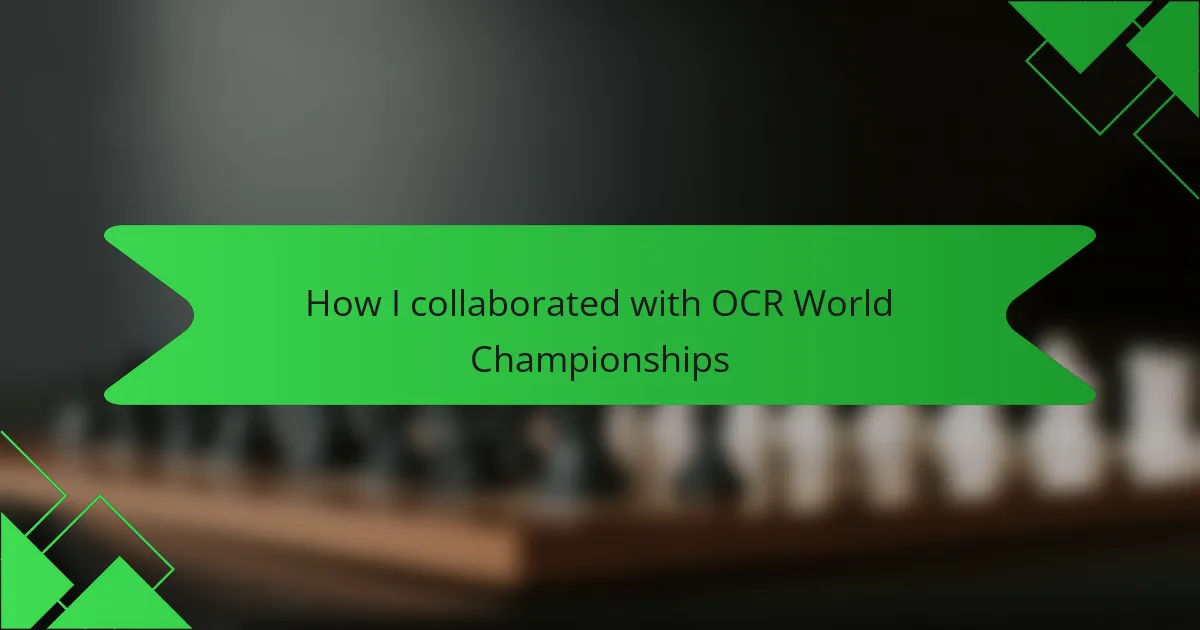Key takeaways
- Obstacle course racing (OCR) combines physical challenges with mental resilience, fostering camaraderie among participants.
- The OCR World Championships showcase diverse obstacles, highlighting the importance of community and mutual support among athletes.
- Effective collaboration and clear communication among organizers, volunteers, and safety teams are vital for event success.
- Flexibility and adaptability in response to unexpected challenges are crucial for achieving positive outcomes in collaborative efforts.

Introduction to Obstacle Course Racing
Obstacle course racing, or OCR as many enthusiasts call it, is a thrilling blend of running, climbing, and strategy. Have you ever tested not just your speed but also your strength and agility all at once? That’s the beauty of OCR—it challenges every part of you.
When I first faced an obstacle course, the mix of adrenaline and uncertainty was intense. Each barrier wasn’t just a physical hurdle but a mental puzzle pushing me to dig deeper. It’s that combination of physical challenge and mental grit that makes OCR uniquely rewarding.
What draws so many to this sport? For me, it’s the camaraderie and the feeling of accomplishment after conquering obstacles that seemed impossible at first glance. OCR isn’t just a race; it’s a journey that reveals what you’re truly capable of.
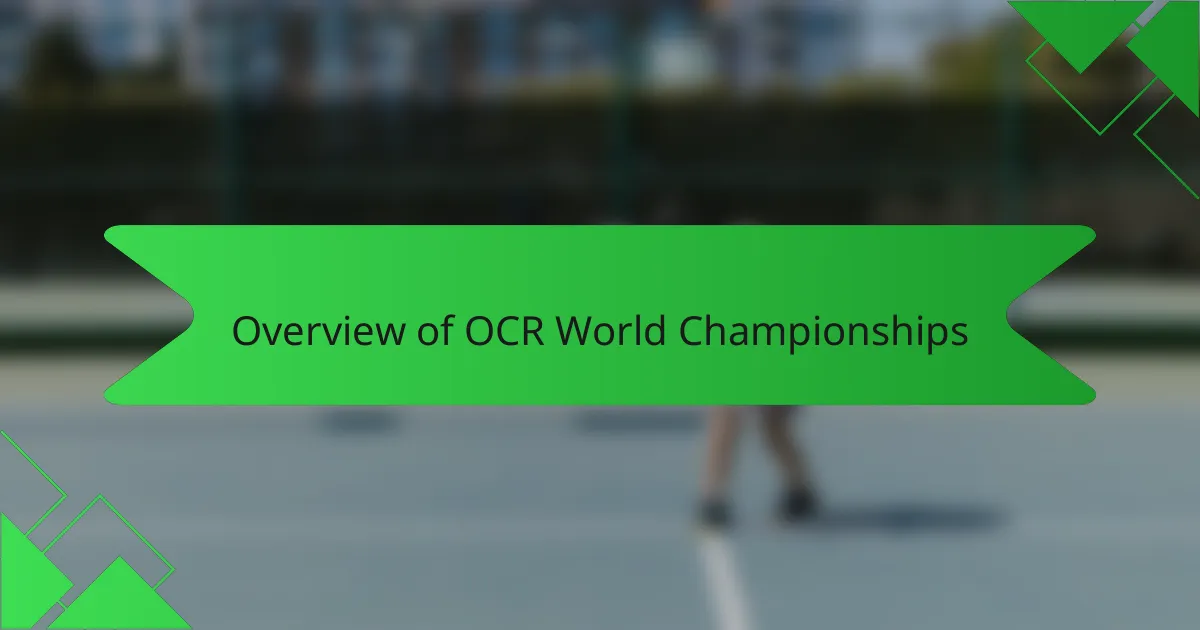
Overview of OCR World Championships
The OCR World Championships stand as the pinnacle event in obstacle course racing, bringing together top athletes from around the globe. Have you ever wondered what it feels like to compete against the best, knowing every obstacle demands your absolute best? That atmosphere, charged with intense competition and mutual respect, is something I experienced firsthand and never forgot.
What struck me most about the Championships was the sheer scale and diversity of obstacles—each designed to test different skills, from raw power to delicate balance. I remember tackling an obstacle that seemed impossible at first, but being cheered on by fellow racers made all the difference. This event isn’t just about individual glory; it’s about a community pushing each other beyond limits.
Beyond the physical challenges, the OCR World Championships also celebrate resilience and determination. Watching athletes from various backgrounds, all united by grit and passion, gave me a new perspective on what it means to persevere. It’s more than a race—it’s a testament to human spirit.
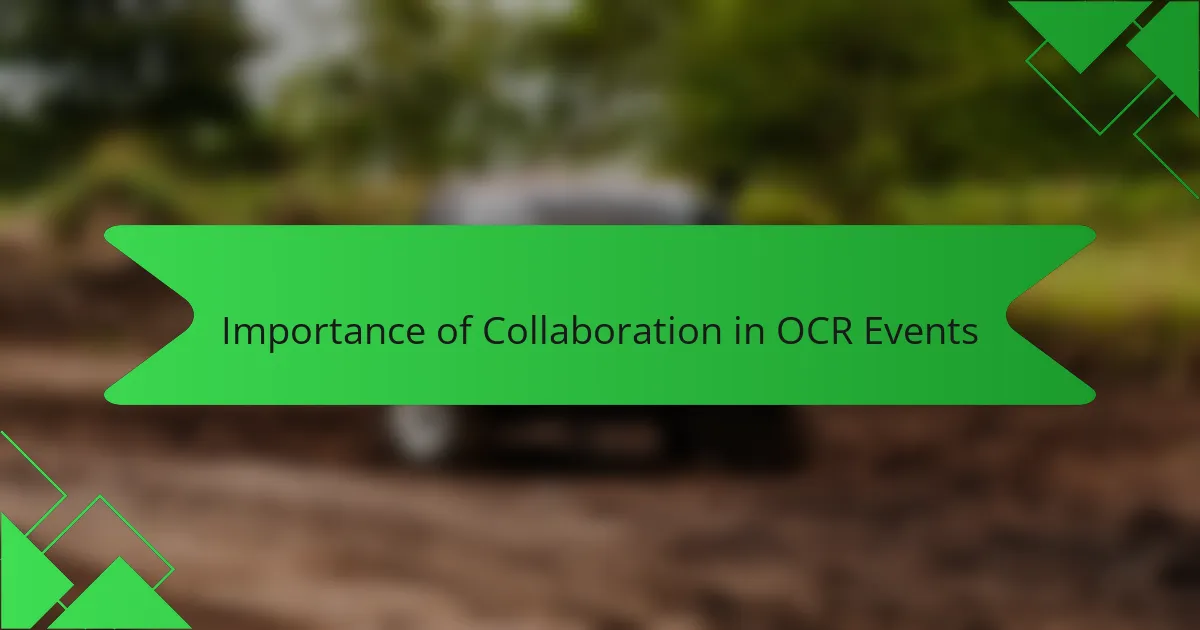
Importance of Collaboration in OCR Events
Collaboration in OCR events isn’t just a nice-to-have; it’s essential. When I took part in organizing the OCR World Championships, I realized how teamwork behind the scenes shapes the entire experience. Without seamless communication and trust, even the best-laid plans can fall apart, leaving participants stranded or safety compromised.
Have you ever noticed how racers cheer each other on during the toughest obstacles? That spirit of mutual support spills over from the athletes to the event organizers, volunteers, and sponsors working shoulder to shoulder. In my experience, this collective effort creates an atmosphere where everyone—from the first-time racer to seasoned pro—feels part of something bigger than themselves.
I still remember a moment when a last-minute obstacle restructuring threatened to delay the event. Thanks to quick collaboration between course designers, safety teams, and communications staff, we adapted in real time. It reinforced for me how OCR is truly a group success, where collaboration turns individual challenges into shared victories.
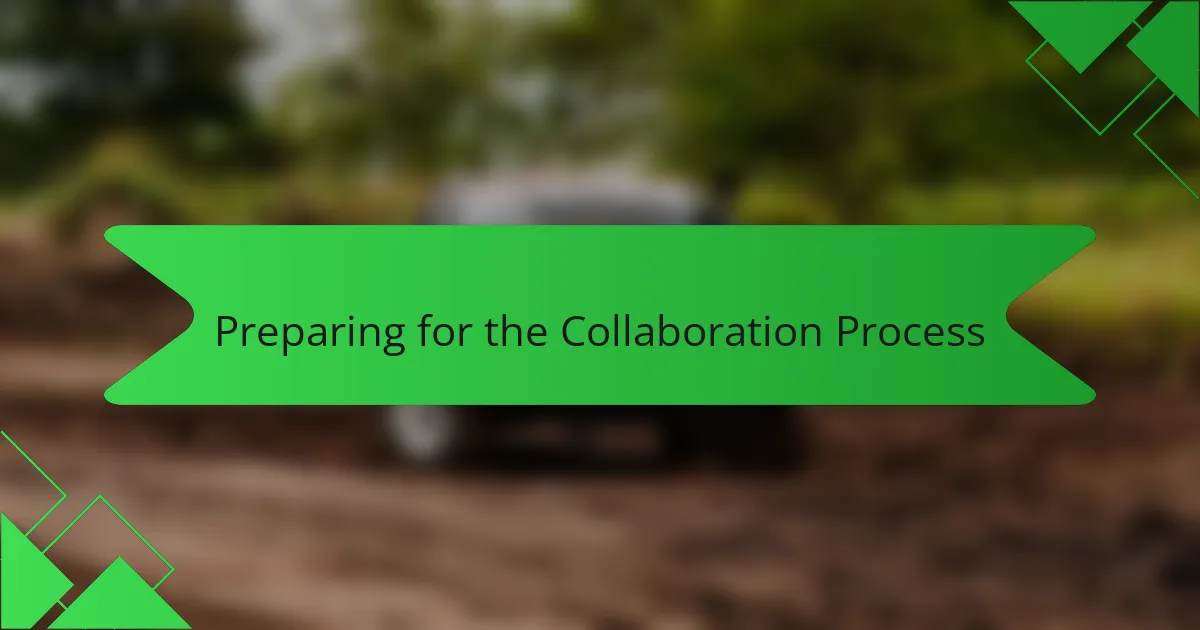
Preparing for the Collaboration Process
Getting ready for collaboration with the OCR World Championships was no small feat. I spent countless hours learning about the event’s core values and understanding the needs of every stakeholder involved. Have you ever felt that mix of excitement and pressure when preparing to team up with experts? That’s exactly how I felt—as if I was gearing up for a race, but this time, the course was communication and coordination.
One thing that stood out to me during preparation was the importance of clear roles and expectations. I made it a point to connect deeply with organizers and volunteers early on, asking questions to grasp their challenges and goals. From my experience, setting this foundation prevented many headaches later and built a trust that carried us through tight deadlines and unexpected twists.
I also had to mentally prepare for fluidity—knowing that in OCR, plans can change in a heartbeat. Reflecting on past races, I realized how often flexibility was the unsung hero of success. So, I embraced that mindset from the start, ready to pivot and adapt as the collaboration unfolded, turning obstacles into opportunities.
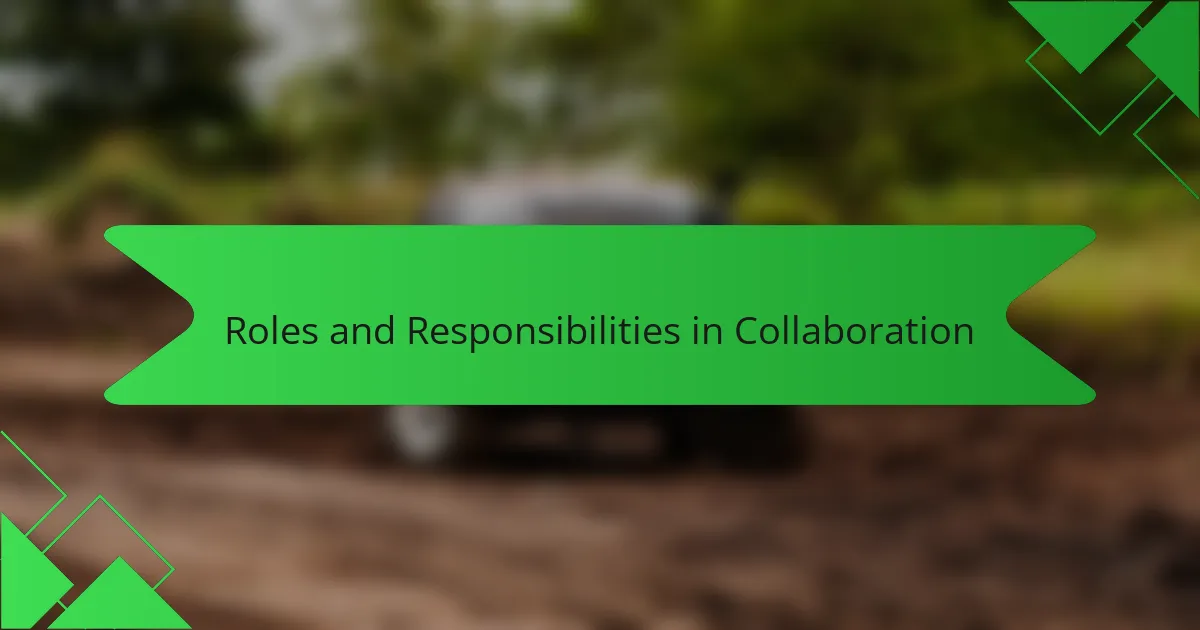
Roles and Responsibilities in Collaboration
Defining clear roles was crucial in our collaboration. I remember feeling a mix of relief and clarity when each team member—from course designers to safety personnel—knew exactly what was expected. It makes me wonder, how often do projects stumble simply because responsibilities aren’t well communicated?
Taking on specific tasks allowed me to focus and contribute effectively, whether it was coordinating volunteer schedules or ensuring obstacle safety standards were met. Have you ever noticed how having a clear role can turn overwhelming chaos into manageable action? That was my experience throughout this partnership.
What struck me most was how these roles didn’t exist in isolation. There was an ongoing dialogue, a shared accountability that kept us aligned and motivated. In moments of pressure, knowing that everyone was not only doing their part but also ready to support others made all the difference.
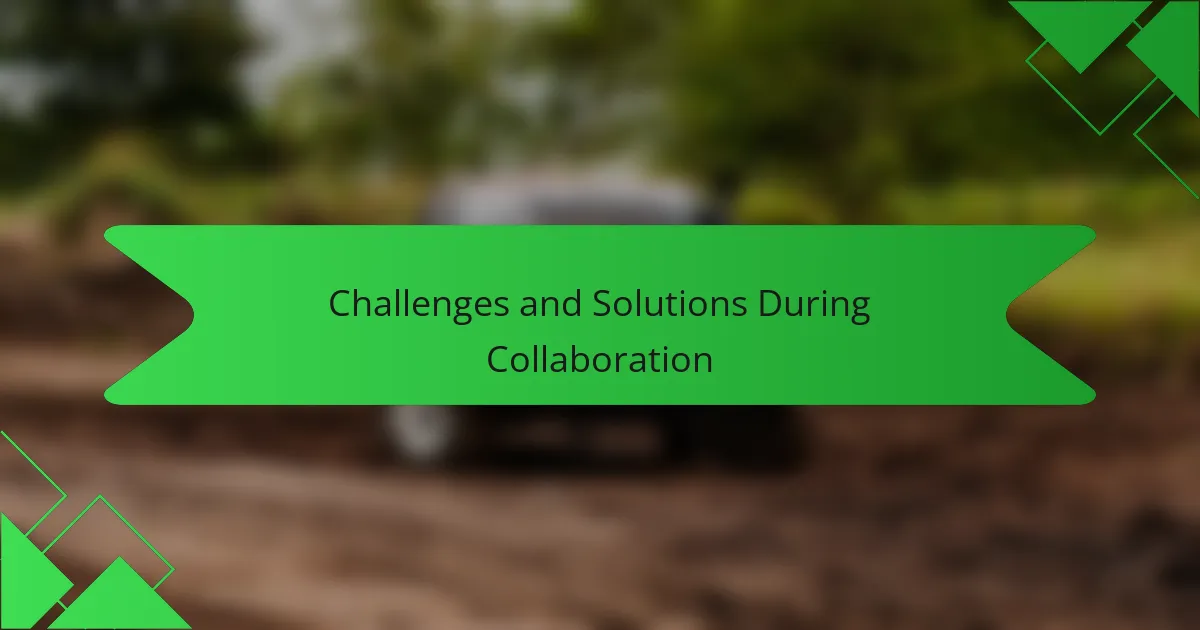
Challenges and Solutions During Collaboration
One of the biggest challenges we faced during collaboration was coordinating across different time zones and specialties. I often found myself juggling calls late into the night, wondering how we’d keep everyone on the same page. It was only by setting up clear communication channels and regular check-ins that we turned this hurdle into a smooth process.
Another obstacle popped up when unexpected weather changes forced last-minute adjustments to the course layout. I’ll never forget the tense moments as we brainstormed alternatives under tight deadlines. What saved us was the team’s flexibility and quick decision-making—a reminder that in OCR, adapting on the fly is just part of the game.
Finally, managing the diverse expectations of athletes, sponsors, and organizers sometimes felt like walking a tightrope. I asked myself, how do we balance everyone’s needs without losing sight of the event’s core values? Through open dialogue and a shared commitment to the sport’s spirit, we found solutions that honored all voices and kept the momentum going.
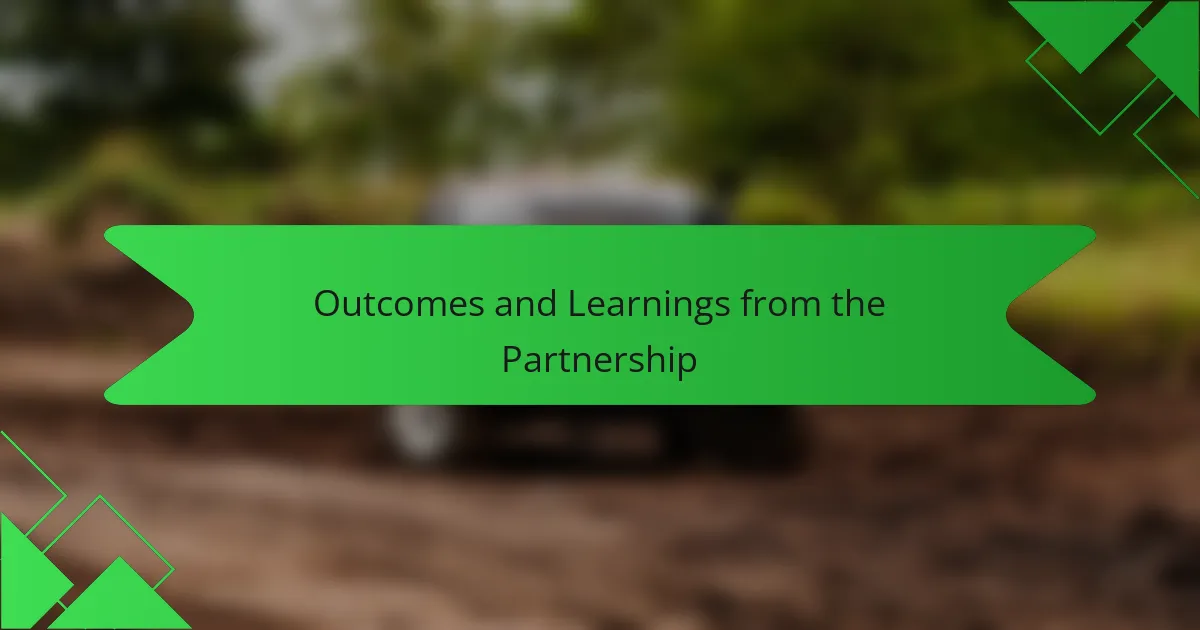
Outcomes and Learnings from the Partnership
The partnership with OCR World Championships taught me that true success comes from embracing both planning and adaptability. Have you ever noticed how even the best plans can shift when the unexpected happens? Seeing our team pivot quickly under pressure revealed how agility in collaboration really drives positive outcomes.
I also learned that building strong relationships upfront pays off more than I initially expected. By investing time in understanding each person’s perspective and expertise, we created a foundation of trust that carried us through tough moments. It made me realize that collaboration isn’t just about tasks—it’s about people connecting and supporting each other.
Perhaps most surprising was how much I grew personally through this process. Facing challenges alongside passionate teammates pushed me out of my comfort zone and deepened my appreciation for the sport’s inclusive community. Have you ever felt that sense of belonging that turns a difficult project into a rewarding journey? That’s exactly what this partnership felt like for me.
